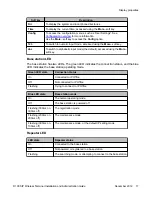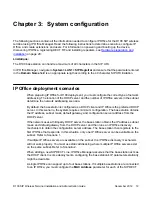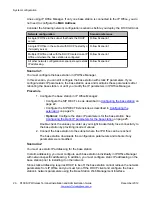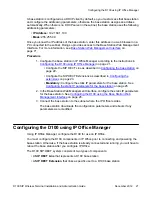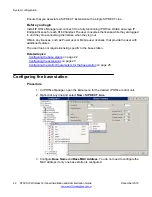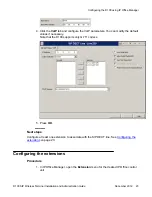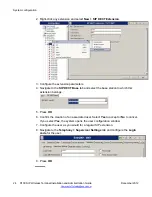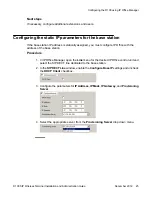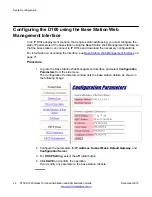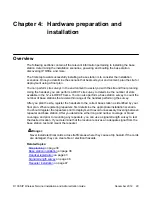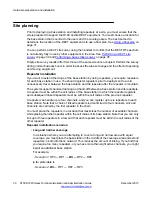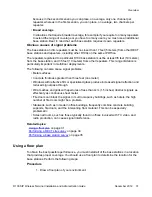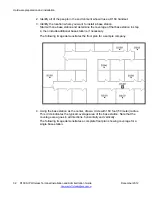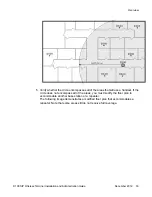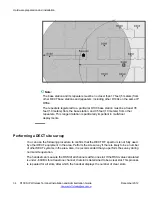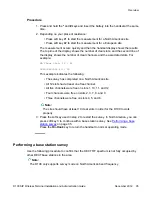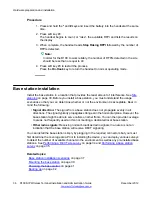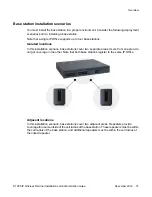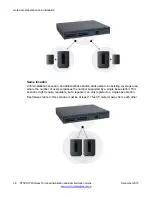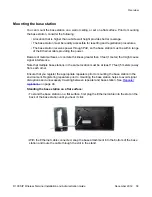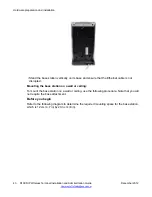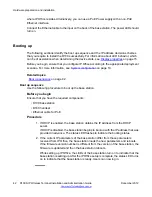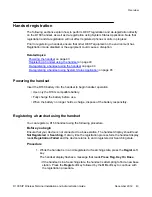
Chapter 4: Hardware preparation and
installation
Overview
The following sections contain all the relevant information pertaining to installing the base
station, determining the installation scenarios, powering and booting the base station,
discovering IP Office, and more.
The first step toward successfully installing a base station is to consider the installation
scenarios. Once you determine the scenario that best suits your environment, plan the site for
deployment using a floor plan.
You can perform site surveys in the environment to assist you with the site and floor planning.
Using the handset, you can perform a DECT site survey to determine the number of slots
available in the 12–slot DECT frame. You can also perform a base station survey to count the
number of base stations that exist within range of the handset performing the survey.
After you plan the site, register the handsets to the correct base station as identified by your
floor plan. When registering repeaters, first determine the appropriate installation scenario.
You should register the repeaters prior to deployment to avoid unnecessary traveling between
repeater and base station. After you determine either long and narrow coverage or broad
coverage, and prior to mounting any repeaters, you can use a signal strength survey to test
the desired location. If you determine that the location receives an adequate signal from the
base station, test and mount the repeater.
Danger:
Never install electrical cords across traffic areas where they cause a trip hazard. If the cords
are damaged, they can create fire or electrical hazards.
Related topics:
on page 30
on page 36
on page 43
on page 46
on page 47
D100 SIP Wireless Terminal Installation and Administration Guide
December 2012 29



